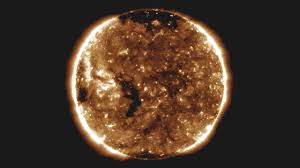Surprising new results include strange flipping of star’s magnetic field
Nasa has revealed the first findings from a pioneering spacecraft sent to “touch the Sun”.
The Parker Solar Probe has flown closer than ever before to our Sun and has now sent back its first data from the mission.
The car-sized spacecraft left Earth last summer and is now about 15 million miles away from the Sun.
The researchers have revealed how the magnetic field of the Sun is dramatically and quickly flipping, and then reversing back again, sometimes straight away.
“There was a major space weather event in 1859 that blew out telegraph networks on Earth and one in 1972 that set off naval mines in North Vietnam, just from the electrical currents generated by the solar storm,” said Stuart Bale, a University of California, Berkeley, professor of physics and lead author of an article about new results from the probe’s FIELDS experiment.
Previous missions have shown that solar wind increases its speed as it leaves the corona, but it has not been clear how this happens.
Another paper focuses on the source of so-called “slow” solar wind – with speeds less than 310 miles per second – which until now has been poorly understood.
These holes, the scientists say, are cooler and less dense than the surrounding corona.
Stuart Bale, a professor of physics at the University of California, Berkeley, and lead author of one of the papers, said: “The first three encounters of the solar probe that we have had so far have been spectacular.
Understanding more about solar activity could help scientists forecast the large eruptions from the Sun that pose a threat to satellite and communications systems.
Over the next five years, the probe will continue to make new discoveries as it moves closer to the Sun, eventually making its closest approach in the year 2024, as it flies 3.9 million miles above the solar surface.
During its scorching journey, the probe will orbit the Sun 24 times while being subjected to extreme heat and radiation, with temperatures expected to reach 1,377C, nearly hot enough to melt steel.
As it gets closer to the Sun, the probe is expected to hurtle around the star at 430,000 miles an hour, which will make it faster than any spacecraft in history.
The Independent
 Lebanese Ministry of Information
Lebanese Ministry of Information



